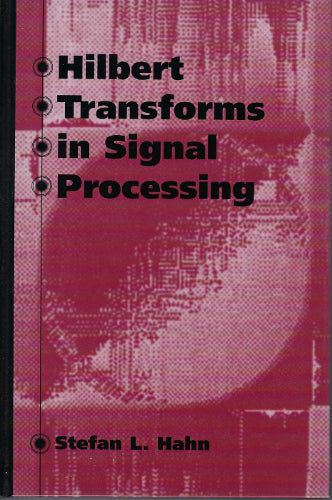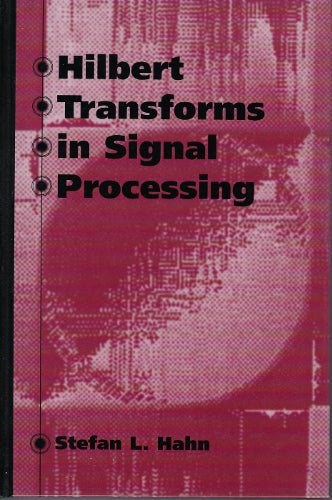Hilbert Transforms in Signal Processing (Hardcover)
Hilbert Transforms in Signal Processing (Hardcover)
Condition
LIKE NEW: This book is in excellent, like-new condition. The pages are clean and the spine is tight.
Product Details
From the Preface: "This book is based on the author's many years of educational and research activity at the Electronics Department of the Warsaw University of Technology (originally known as the Politechnika Warszawska). Some of the material has previously been presented in numerous papers the author has published in the United States, Germany, and Poland. However, the book also contains the results of investigations not previously published and the work of other authors (presented in its original form)."
From the Introduction: "Signal processing is a fast-growing segment of modern science and technology. Signal processors are applied in telecommunications, radiolocation, transportation equipment, medical equipment, production equipment, optical and radioastronomy, and many other domains. The technological basis of signal processing is modern microelectronics (including optics). Its theoretical basis is signal and system theory, a domain that is in a state of rapid and continuous development. Signal-processing algorithms are implemented using sophisticated software. Integral transformations of various kinds including Fourier, Laplace, Hilbert, Z-, Hartley, and Wavelets, play a significant role in signal processing. This book describes in detail the theory and selected applications of the Hilbert transformation, which serves as a theoretical basis of the complex nation of signals. This notation has stimulated progress in signal and system theory since the end of the nineteenth century."
Chapters
- Theory of the One-Dimensional Hilbert Transformation
- Properties of the Hilbert Transformation Derivations and Applications
- Distributions in the Theory of the Hilbert Transformation and Complex Signals
- The Discrete Hilbert Transformation
- Hilbert Transformers
- The Hilbert Transform in Modulation Theory
Appendices
- Tabulation of Hilbert Pairs
- The Derivation of the Derivative of the Logarithmic and θ(t) Distributions
- Supplement to Chapter 4
- Details of the Calculation of the Phase Function of HR Hilbert Transformers
- Derivation of the Spectrum of the CSSB Signal for Linear Amplitude
- Derivation of the Fourier Spectrum of the N-Dimensional Hilbert Transform
Share


